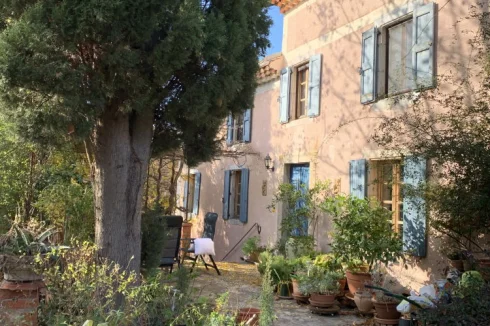French Wine Growers Face EU Reform Battle
Tuesday 15 September 2009
French wine production and marketing is set for major change this year, but will it amount to any more than old wine in new bottles?
A new system of EU wide regulation aims to end the overproduction of wines, and to redirect spending towards making the European wine market more competitive.
As part of the plan the EU is hoping to take around 175,000 hectares of uncompetitive vineyards out of the market in Europe by providing farmers with subsidies for grubbing them up and planting new crops. Funding support for the crisis distillation of surplus wines has also been scraped.
Conversely, the restrictions on planting rights will gradually be abolished, thereby allowing farmers who are competitive and successful to plant more vines.
Wine making practices are also to be more flexible, but there is to be tighter regulation of vineyards, with the EU taking full control of approving all new practices.
'Vin de Table' Becomes 'Vin de France'
However, it is the new system of wine labelling and classification that has generated most controversy.
Gone is the familiar Appellation d'Origine Contrôlée (AOC) classification that has served France for the past 30 years, to be replaced by a European wide descriptive model.
The aim of this reform is to make the whole system of wine labelling easier for the consumer to understand.
The existing system of AOC control has few friends in France, if only because of the high level of self-regulation of the present arrangements.
The use of AOC was meant to guarantee a certain level of geographic authenticity and quality, but as around 40% of the wines produced in France now possess the classification many critics consider the label has lost any meaning.
A system that allows some AOC wines to sell for €30 or more, while other wines with the same classification can be found in the shops for less than €3, certainly seems of dubious value to the consumer.
The new regime will introduce a greater level of independent regulation of the market, but for some wines the link between terroir and the wine in the bottle will actually become even more tenuous!
Under the new system the terms with which we are all familiar on bottles of French wine – vin de table, vin de pays, Appellation d'Origine Vin de Qualité Supérieure and Appellation d'Origine Contrôlée- are being phased out, to be replaced by a tiered labelling system, as follows:
- No Geographic Protection - At the bottom of the hierarchy will be those wines with no indication on the bottle of their geographic origins – wines sans indication géographique (IG). They will merely be labelled ‘Vin de France’, with the possibility for producers to add the grape variety and the year of vintage. The minimum of administrative and wine production constraints are envisaged for these wines.
- Protected Geographic Origin - At the next level there will be wines where the geographic origins are protected – indication géographiques protégées (Igp). The use of this labelling is intended to group together those wines within particular geographic areas where climatic and production conditions are similar.
- Protected Designation of Origin - Finally, at the top of the tree those wines with Appellation d’origine protégée (Aop), where there exists an important link with the terroir, and for which strict rules of production will apply.
The old labels are not going to disappear overnight, for wine producers have been given until the end of 2010 to use existing labels, although the regulations on production come into immediate effect.
The arrival of protected geographic origins does now provide the opportunity to reshape the boundaries of those wines unable to achieve AOP status, but it is a task that has already provoked a lot of controversy.
Thus, what is to be done for wines currently labelled 'Côtes du Rhône', which currently covers a distance of 200 kilometres in the Rhone Valley from Vienne in the North to Avignon in the South? Or those wines labelled 'Bordeaux', which happens to coincidentally cover the administrative boundary of the department of Gironde?
In practice, it cannot be the case that the climatic, soil and production conditions are the same across these vast areas, but wine growers are not easily going to accept loss of such prestigious geographic branding.
There is also huge controversy about the ability of producers of former vin de table wines to allow the grape variety on their wines as producers of superior wines consider it will reduce the price of their own wines.
Thus, wine growers in Alsace, Jura and Savoie already appear to have persuaded the authorities that the grape variety of their wines - Gewurstraminer, Riesling, Sylvaner etc - should be excluded from the wine label of ordinary table wines. So a producer of a 'Vin de France' will be able to sell wines that contain these grape varieties, provided the cépage is not mentioned on the bottle!
The regulatory wine body in France – the Institut national de l'origine et de la qualité (Inao) – has the unenviable task of determining the contours of these new arrangements. Not only must they determine the new geographic entities, but they must also determine into which labelling group a wine producer can be placed. Reports indicate that the organisation is engulfed by the whole process and that the outcome it likely to be a rather messy one.
So much for greater clarity!
Related Article: It may be Pink, but it’s not Rosé Wine
Thank you for showing an interest in our News section.
Our News section is no longer being published although our catalogue of articles remains in place.
If you found our News useful, please have a look at France Insider, our subscription based News service with in-depth analysis, or our authoritative Guides to France.
If you require advice and assistance with the purchase of French property and moving to France, then take a look at the France Insider Property Clinic.





